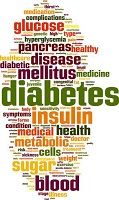Article
Study: Intranasal Glucagon Effective Alternative to Shots in Kids with Type 1 Diabetes
Author(s):
Injecting pediatric diabetes type 1 patients with glucagon can be difficult for non-medical caregivers. Such treatment is needed for severe hypoglycemia. A new study shows that an inhaled glucagon powder is effective and easier on these rescuers.

Intranasal glucagon powder treatment for diabetes type 1 emergencies showed a much higher success rate with fewer errors than injection with commercially available glucagon, researchers reported. The treatment is meant to reverse insulin-induced hypoglycemia in these patients. In glucagon is absorbed, not inhaled.
In an abstract presented at the 51st Annual Meeting of the European Association for the Study of Diabetes (EASD) Jennifer Sherr, MD, PhD of Yale School of Medicine said her study showed that glucagon nasal powder (GNP/Locemia Solutions) was faster to administer and resulted in blood sugar response equivalent to that of the standard injection.
In her study, the nasal glucagon is being evaluated for pediatric patients ages 4 to 17 with diabetes type 1.
Other than the case of one six-year-old participant who blew his nose before the powder was absorbed, the results were favorable and there were no major side effects.
In a related study evaluating the powder's use in adults,subjects acting as caregivers delivered the treatment to mannequins.
The lead investigator was Jean-Francois Yale, M D, of McGill University in Montreal, Canada.
As part of the study they had to find the glucagon kit--either the powder or a standard injection kit--in the mannequin's backpack. The researchers used distracting sound effects to simulate a real-life situation.
The subjects did not do well, overall. Though some completed the task successfully, one subject refused to do the injection, others injected only the dilutant, and one injected insulin instead of glucagon.
As the Canada study showed, current injection kits can be intimidating for non-medical caregivers called on to deal with an episode of severe hypoglycemia.
Using these kits means following a multi-step process to reconstitute the glucagon solution, in addition to the anxiety the rescuer may have about giving an injection, the researchers said.
Editor's Note: The glucagon is absorbed, not inhaled, as incorrectly stated in an earlier version of this story.




